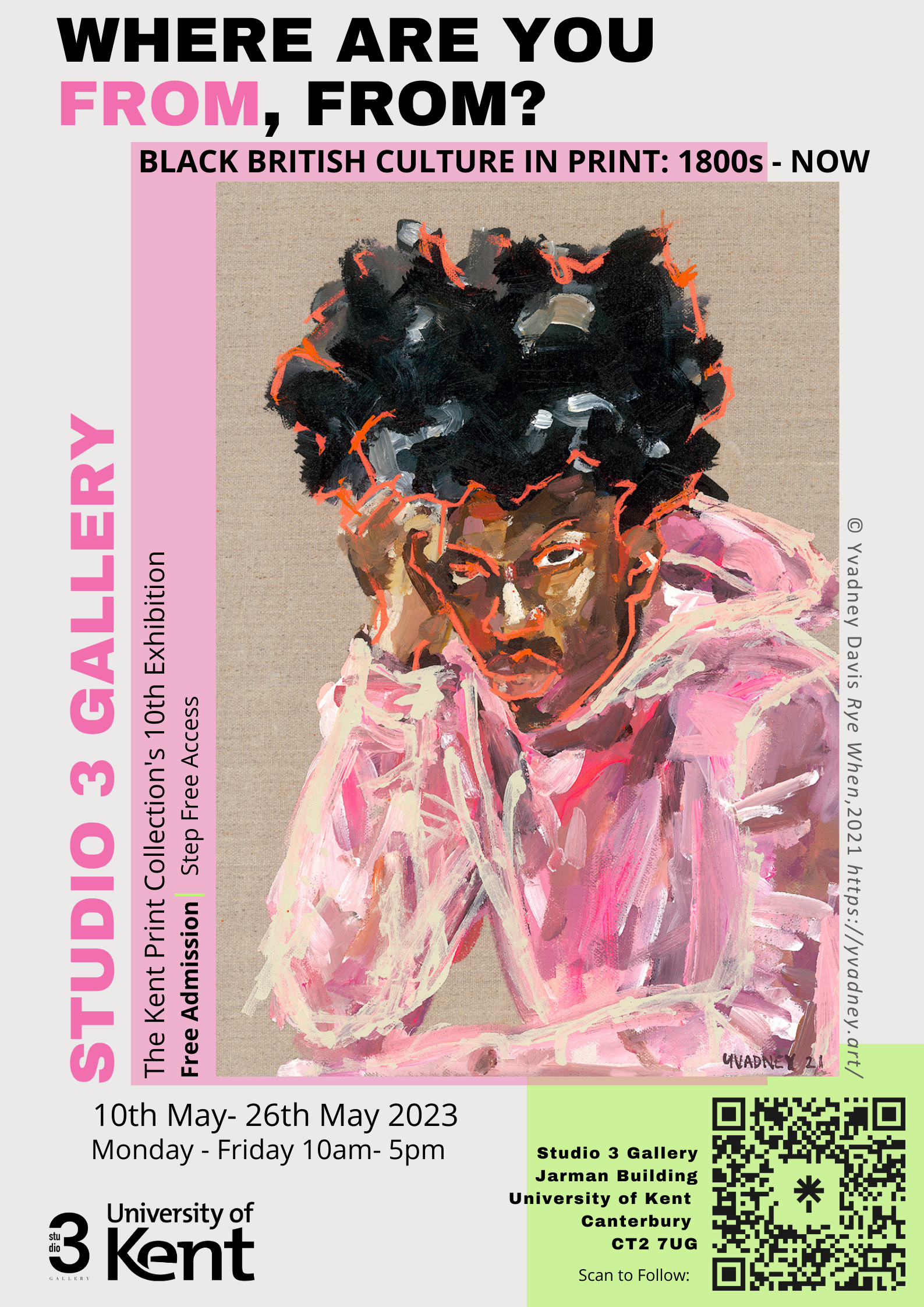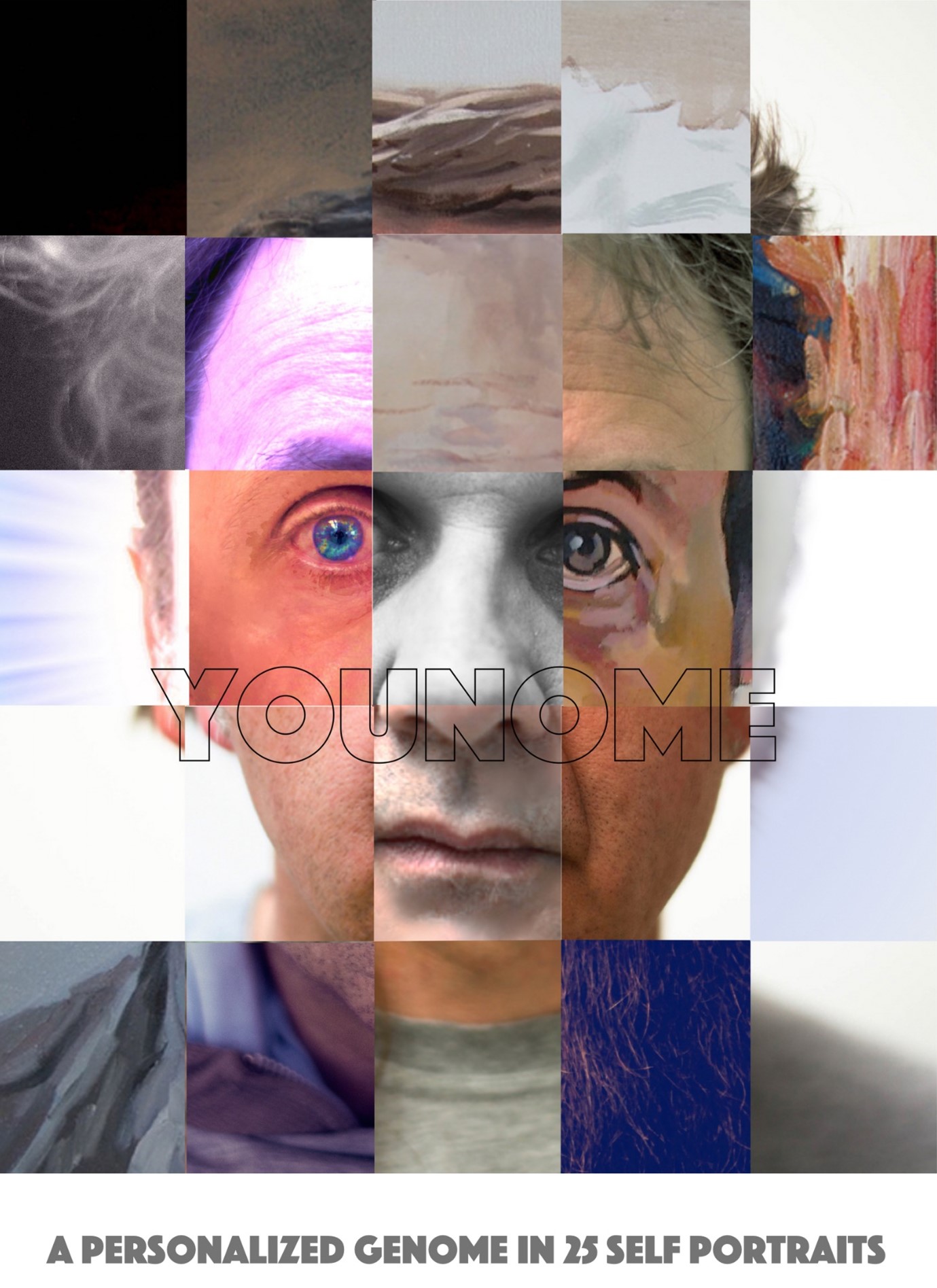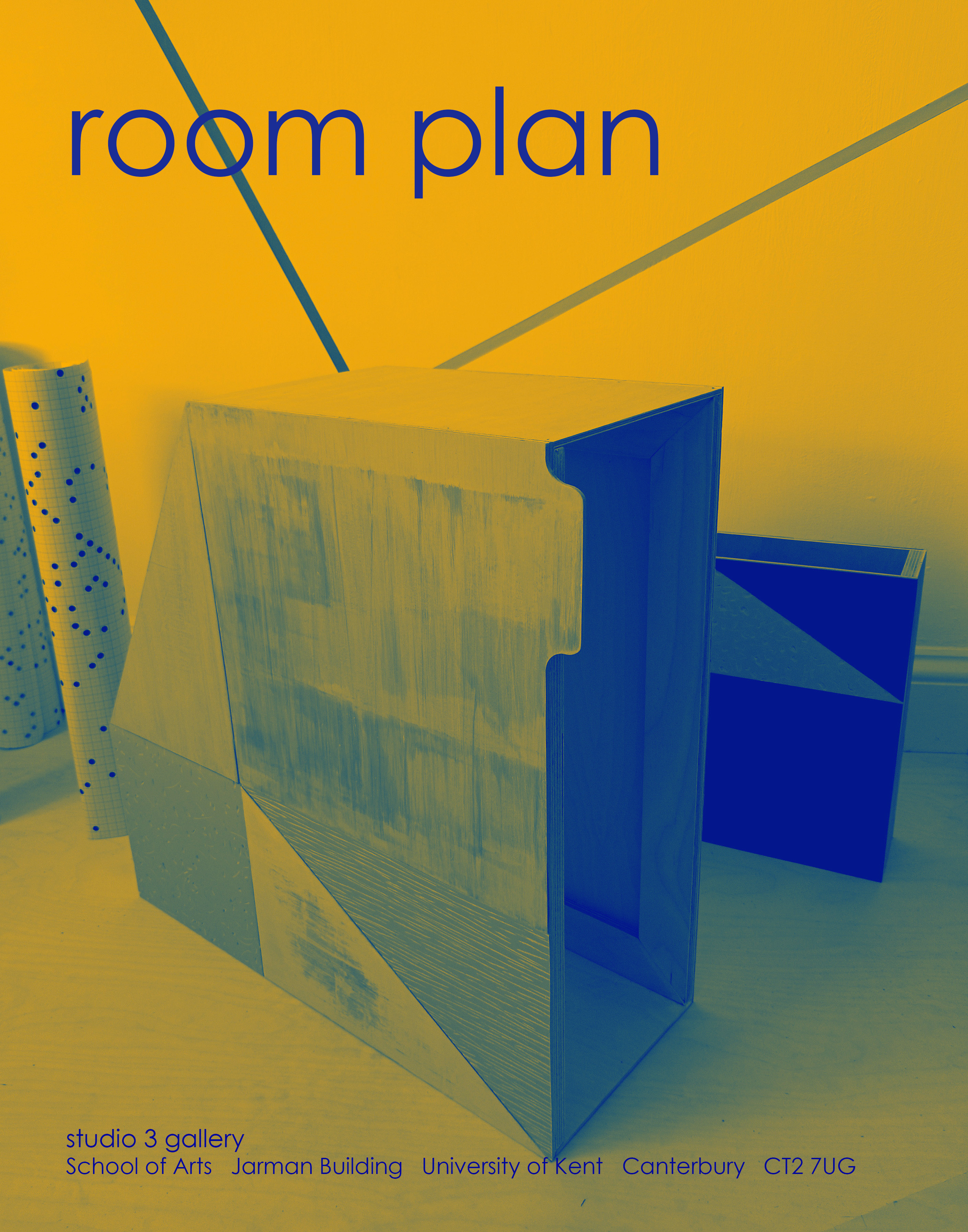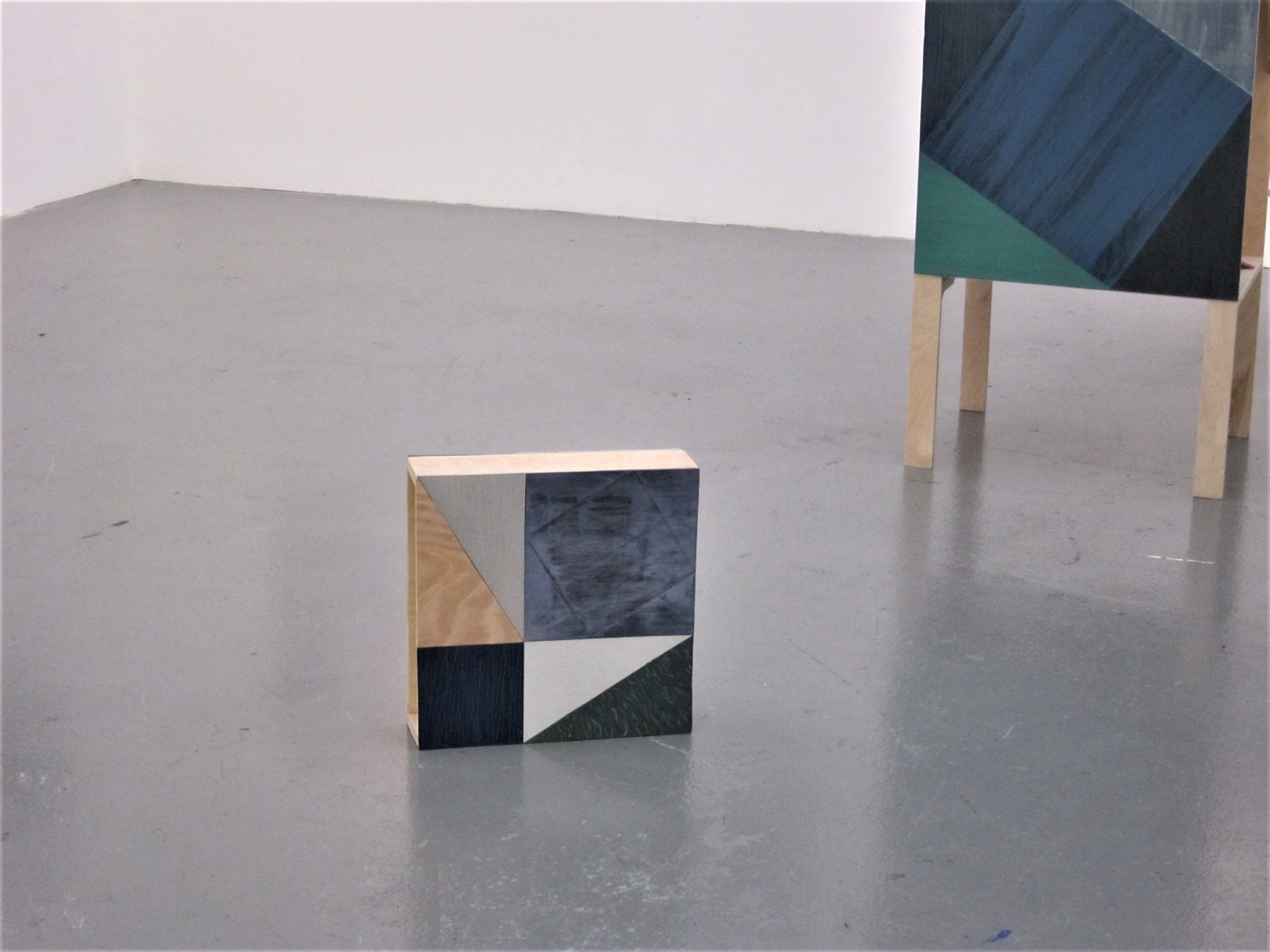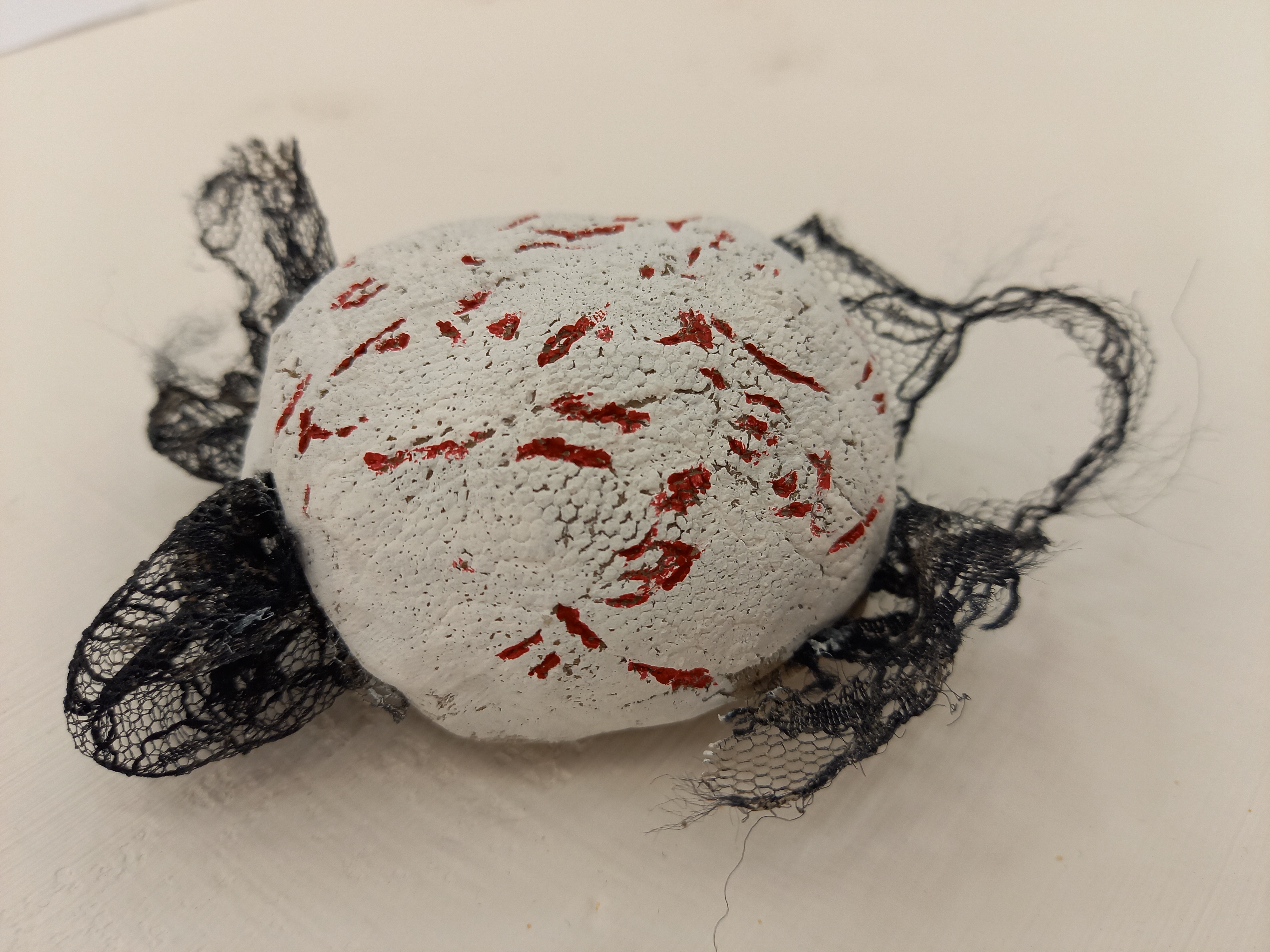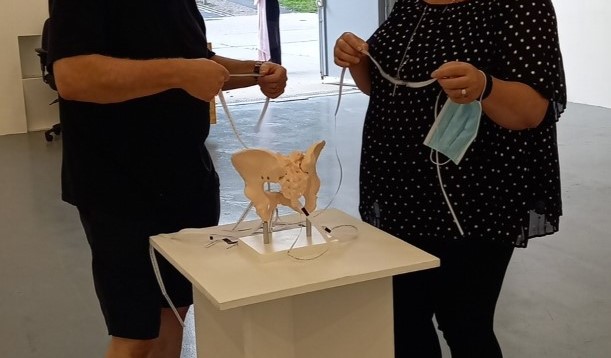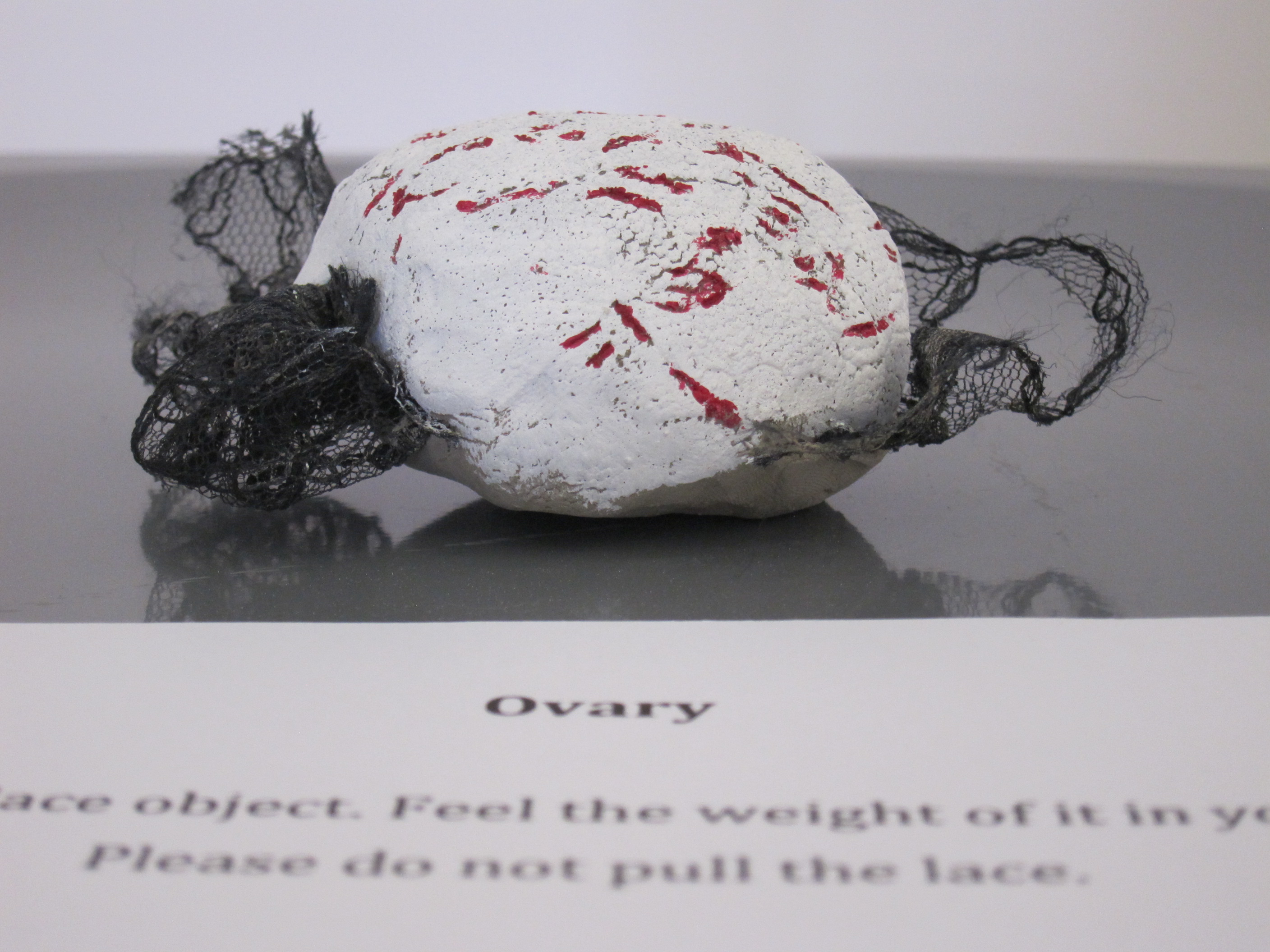The University of Kent’s Studio 3 Gallery held an exciting and nuanced exploration of black British culture through art: the exhibition Where are you From, From? Black British Culture in Print: 1800s-now (Kent Print Collection 10th Exhibition). It ran from 10 – 26 May 2023 with high attendance and extensive acclaim.
Curated by a dedicated team of 3rd year art history students and made possible by generous loans and volunteers from Canterbury, London and the surrounding area, the works present a range of influential Black British artists engaging with concepts such as: class, race, music, dress and religion in their work.
Artists in the exhibition include household names – such as Sonia Boyce and Tam Joseph with a print of his brilliant ‘Spirit of the Carnival’ on display- and emerging artists like Kamlah Kew and Yvadney Davis, pioneering Black representation in the art industry. Alongside these contemporary artists and prints, we are pleased to unveil a range of archival pieces donated by Autograph Gallery charting the course of Black British history. The body of work displayed, uncovers how culture is reproduced, maintained and passed down through the generations.
The exhibition chronicles the changes and continuities of Black diasporic identities in Britain from the black Victorians of the 19th century to predictions on the future state of black culture and representation.
What does it mean to be ‘from’ somewhere, and how do answers to this question change and evolve as globalisation complicates and hybridises identity, belonging and origin? The name of the exhibition contemplates a common question many are familiar with. While seemingly innocuous, it reflects a microaggression that suggests a lack of belonging in this country. It simultaneously creates a personal debate for the person of which it is asked, usually a Black person or person of colour. The exhibition repurposes an interrogative statement, seeking instead to connect Black people both back to Caribbean and African ancestry, and common histories in Britain, as we examine the true multicultural nature of the nation.
The University of Kent’s Studio 3 Gallery is located in the School of Arts Jarman building, at the heart of the Canterbury campus. Join us as we reject simplistic and linear narratives, and navigate the treacherous scopes of self- expression and identity. Follow us on our social media pages and follow the link to our website to keep up to date with the exciting events and talks we are in the process of planning during the exhibition’s run!
Instagram: @/Whereareyoufromfrom_
